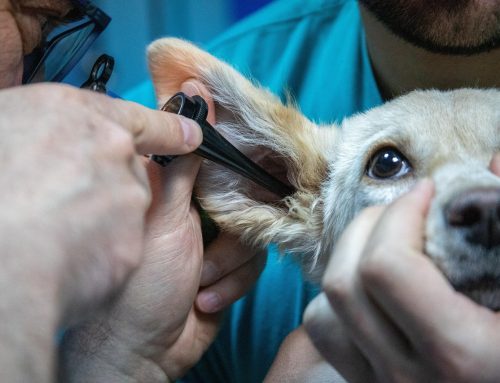
Spaying your dog is a big decision—but it’s also one of the most important steps you can take to protect her health and prevent unwanted litters. Whether you’ve just adopted a puppy or you’re caring for an older dog, it’s natural to have questions about when to spay, how much it costs, and whether it’s really the best choice.
Let’s break it all down in simple terms so you can make the right call for your pup.
What Does It Mean to Spay a Dog?
Spaying is a surgical procedure that removes a female dog’s reproductive organs, including the ovaries and uterus. The medical term is ovariohysterectomy. Once a dog is spayed, she can no longer get pregnant or go into heat.
The surgery is performed under general anesthesia by a licensed veterinarian. Most dogs recover quickly and go back to their normal routine within 7 to 10 days.
When Should You Spay Your Dog?
The best time to spay a dog depends on her age, breed, size, and overall health. In general, small and medium-sized dogs under 45 pounds are usually spayed between five and six months of age, before their first heat cycle. This timing offers the best long-term health benefits. For large or giant breeds over 45 pounds, some veterinarians suggest waiting until the dog is 12 to 18 months old. This allows more time for bone and joint development, which is especially important for big dogs.
Even if your dog is older or has already had a heat cycle, it’s not too late. Spaying is still safe and beneficial in most cases, unless there’s a specific medical concern. If you’re unsure, talk to your vet. They can give you the best advice based on your dog’s breed, age, and activity level. The American Veterinary Medical Association (AVMA) has helpful recommendations on spay timing.
How Much Does It Cost to Spay a Dog?
The cost to spay a dog can vary widely depending on factors like your location, your dog’s size, and the clinic you choose. At low-cost clinics or animal shelters, spay surgery can cost between $50 and $150. These options are often available through local nonprofit organizations or public spay/neuter programs.
At private veterinary clinics, spaying usually costs between $200 and $600. If your dog is in heat, overweight, or has other health concerns, the price can go higher—sometimes as much as $800. While it might sound like a lot, spaying is a one-time cost that can help prevent far more expensive health problems later in life.
Many communities also offer low-cost or free spay programs for pet owners with financial need. You can find affordable services through resources like SpayUSA, the ASPCA Spay/Neuter services, or your local humane society.

Why Spaying Is Better for Your Dog
Spaying offers a wide range of health and behavior benefits that go beyond just preventing puppies. One of the biggest reasons to spay is that it helps avoid unwanted litters. Every year, millions of dogs end up in shelters. By spaying your dog, you help reduce pet overpopulation and give more dogs a chance to find a loving home.
Spaying also protects your dog from several serious health issues. It greatly lowers the risk of pyometra, a dangerous and often fatal infection of the uterus. It also reduces or eliminates the risk of ovarian and uterine cancer. If your dog is spayed before her first heat, her chances of developing mammary tumors—a common and often deadly form of cancer—drop to less than 1%. These health benefits are backed by research from the American College of Veterinary Surgeons.
Another reason to spay is to prevent heat cycles. When a dog goes into heat, usually every six to eight months, she can experience bleeding, restlessness, and mood changes. She’ll also attract male dogs from blocks away, which can be stressful and hard to manage. Spaying puts a stop to all of this.
Some pet owners also notice behavioral improvements after spaying. Spayed dogs are often calmer and less likely to roam or act aggressively in search of a mate. While spaying isn’t a cure for every behavioral issue, it can make a noticeable difference, especially in multi-dog households.
Finally, spaying removes the risk of pregnancy, which can be risky and expensive. Complications during pregnancy or delivery can be dangerous for both the mother and her puppies, requiring emergency veterinary care. Spaying takes this risk off the table entirely.
Are There Any Risks to Spaying?
Like any surgery, spaying comes with a small risk of complications such as bleeding, infection, or reaction to anesthesia. However, these problems are rare—especially when the surgery is done by an experienced veterinarian. Most dogs recover without any major issues.
In large breeds, there’s some concern that spaying too early might increase the risk of joint issues, such as hip dysplasia or ACL injuries. That’s why some vets recommend waiting until full physical maturity in larger dogs. Talk to your vet about the best timing based on your dog’s size and breed.
It’s also a common myth that spaying causes weight gain. While your dog’s metabolism might slow down slightly, proper diet and regular exercise are usually all that’s needed to keep her healthy and in shape.
What’s the Recovery Like After Spaying?
Most dogs recover quickly after being spayed. During the first 24 to 48 hours, your dog might feel tired or sore. It’s important to provide a quiet space where she can rest without being disturbed. Keep her calm and avoid any rough play, running, or jumping during the first week of recovery.
Your vet may recommend using a cone or soft recovery collar to keep your dog from licking the incision site. This helps prevent infection and allows the stitches to heal properly. Within 7 to 10 days, most dogs are back to their normal routines. Some dogs may have a follow-up appointment to check the incision or remove non-dissolving stitches, depending on the type used.
Watch for any signs of swelling, discharge, redness, or unusual behavior after surgery. If anything seems off, call your vet right away.
When and Why to Spay a Dog
Spaying your dog is one of the best things you can do for her health and happiness. It prevents serious medical issues, reduces stress and unwanted behaviors, and helps control the growing number of dogs in shelters. While the timing can vary depending on your dog’s size and breed, most dogs benefit from being spayed before their first heat cycle.
Although the cost of surgery might seem high at first, it’s a smart investment in your dog’s long-term well-being. There are also plenty of affordable options if you’re on a tight budget.
If you’re unsure about when or how to get your dog spayed, talk to your vet. They’ll help you figure out the best plan based on your dog’s needs—and help you give her the healthiest future possible.






